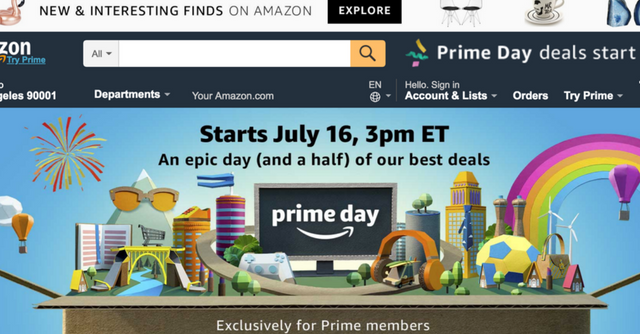
More than 75% of shoppers in the United States now turn to Amazon when searching for products. The platform has become the go-to marketplace for easy online shopping or researching products. Unfortunately, not all merchants are profitable on Amazon. In fact, many sellers quit due to the many policies that favor buyers over sellers.
Amazon’s seller metrics are all tied to the customer experience:
- How often do customers report defects regarding your order?
- What do customers say about your product or service?
- How often do you cancel orders?
- How fast are you shipping orders?
- How satisfied are your customers about a return or customer service experience?
Many sellers complain about buyer fraud and how Amazon always sides with shoppers. The marketplace is also plagued with counterfeiters and fake reviews, further intensifying the competition.
Selling on Amazon is essentially Darwinian - only the fit survive. Fortunately, this guide will walk you through several tips and best practices to help you sell more effectively on Amazon.
Why Sellers Quit
“Amazon is not a place for amateurs” one user commented on the Seller Forums.
The online marketplace has evolved over time, weeding out the weak sellers and promoting the few strong who can withstand the changing policies, the high competition, and the occasional need to provide a return or refund.
Amazon has become a powerful platform for sellers who are also dedicated to the customer experience. Reaching that level will require not only hard work, but also smart customer service and marketing skills.
Business owners who quit usually fail to achieve enough sales to cover their operational costs. Chances are that they didn’t do their homework and weren’t prepared to sell on Amazon. However, you can equip yourself with some of the best Amazon selling tips to improve your performance.
Here is another comment from the Seller Forums: “It’s taken me awhile to get this figured out. I have the Amazon Seller app on my phone. I know immediately if anything is happening with my account…so there is not 24 hrs before I know something. Because I too have been burned. I have also decided not to freak out over the Amazon %'s. It can make you crazy. I’ve worked very hard at increasing sales. I find sales build sales in the Amazon algorithms. I have also won most of my disputes with Amazon. Amazon supports customers first, sellers second…but they do work with you. Don’t quit, learn!”
To help you on your growth journey, we prepared these 10 Amazon growth hacking tips to help you survive and thrive on the marketplace:
1. Find Your Niche Category
Amazon is a crowded marketplace. If your products are not selling, you may need to try targeting a smaller subset of customers. Similar to when you start a new business, you need to find a unique problem that your product solves.
Another way to think about it is to start small. Let’s say you’re looking to sell baby clothes. First, introduce baby shoes that no one else is selling, before expanding into other product lines. Take your time and focus on targeting a smaller segment. That way, you’ll be able to specialize in a particular sector and work on your seller metrics.
2. Quality-Check Your Suppliers
One of the primary reasons many people fail to find success on Amazon is their poor choice of products. Take time to vet your suppliers. A faulty or poorly made product will not only hurt your performance, but could also get you suspended or banned from Amazon. Make sure to obtain samples from every new supplier before listing them online.
If you want to become a successful entrepreneur on Amazon, carve out a niche and perform thorough research before entering the market. In doing so, you can have a clear understanding of the demand and competition for the type products that you are looking to sell.
3. Use the Right Keywords
Keyword research plays a huge role on marketplaces and not just on search engines. Remember, keywords are how customers will find your products, so it’s critical to invest time in learning and understanding the Amazon algorithm.
It’s not easy coming up with keywords yourself, so definitely use automation tools to save time and compete effectively. Use tools such as Google Keyword Planner, JungleScout, MerchantWords or Sonar to identify the most relevant keywords for your products.
4. Write Killer Product Content
Once you have a good grasp of Amazon SEO, you can implement better content on your listings. Highlight all the important features of your product in the description section and bullets. More importantly, as any good copywriter will tell you, focus on the benefits and the value buyers will get - not the technical functionalities of your product.
Whether you write detailed or succinct content, your goal is to provide enough information that will incite shoppers to press the “add to cart” button as soon as they read it. Consider doing A/B testing to determine which product page converts better.
5. Optimize Your Product Listings Regularly
Good product listings increase traffic, drive conversions, and boost your ranking on Amazon. There are six essential aspects that you need to focus on to create the perfect product listing.- Product Title
- Product Images
- Key Product Features
- Product Listing Description
- Amazon Product Reviews
- Amazon Product Rating
It’s important to make sure your listing offers rich content that is updated, especially if a new version of your product is out. Remember, shoppers are often comparing listings across multiple channels, so you’ll need to keep your listings optimized regularly.
6. Manage Your Reviews and Ratings
Feedback from customers plays a significant role in your seller metrics, which in turn, affect your buy box win rate. In order to maintain an excellent score, you need to make sure that you provide high-quality products and superior customer service.
While you can’t please everyone, take time to read through your product reviews and reach out to them when needed. Whether it’s a return, refund, or simply time to troubleshoot the customer’s problem, offering support will show Amazon that you care about your customers.
7. Support Your Sales with a Proper Infrastructure
Amazon shoppers have high expectations when it comes the timeliness of their deliveries. Any delay in shipping will affect your performance, and if you have to cancel an order due to stock being unavailable, then you will have a harder time jumping back into the game. Shoppers will not wait for backorders or items waiting to be restocked. They can simply go to another seller or channel.
This is why it’s important to invest in a good inventory and shipping management software. By supporting your sales with a proper infrastructure, you can deliver a great customer experience that meets shopper expectations.
8. Invest in Repricing Software to Win the Buy Box
There are two main drivers that influence your buy box win rate: your seller metrics and the cost of your items. Price can be easily controlled if you have an Amazon repricing software. Instead of manually going through your listings and updating them based on competition, you can use automation to win the buy box. Here is a list of Amazon repricing software we recommend.
9. Consider Amazon Sponsored Ads
One of the best and fastest ways to get recognized by customers is with Amazon sponsored ads. With these ads, your products will remain on the top every time someone searches one of your targeted keywords. Additionally, your ad will also be displayed in the category pages of your product.
Even though this is a useful marketing tool, not all businesses can use it. These ads require you to invest more money in the business. Take this tip with a grain of salt if you’re running on a shoestring budget.
10. Explore More Amazon Software Tools to Automate Your Business
Since only the fit win on Amazon, you need to arm yourself with the best software tools to beat competition. The following tools are perfect for businesses to keep track of inventory, financial transactions, and product research.- JungleScout: a useful tool for researching Amazon products.
- QuickBooks: a financial software designed to help with generating and managing invoices and payroll.
- Algopix: a great tool for product research, built for Amazon and eBay sellers.
- Bqool: an Amazon software that offers repricing, feedback management, and review management.
- AMZFinder: a review management and feedback request tool.
Conclusion
Selling on Amazon is a long road and often a numbers game. When you feel like quitting, remember that many sellers have found success through hard work, a commitment to excellence, and some of the growth hacking strategies provided in this article.
If you’re a struggling seller and debating if you should try Amazon alternatives, here are some words of encouragement from another seller:
“The name Amazon pretty much sells for you. You are selling on Amazon because of the internet traffic that Amazon attracts. Plus the integrity and the promise to all of its customers the best experience. They expect high standards from you and more so these days.
It is a lot harder for a newcomer to sell on this site today as to maybe 10 years ago without all of the restrictions. We all started from the bottom and some of us were grandfathered in from the old system. We all have to follow the guidelines. You are pretty much on probation as a new seller for probably about 2 years.
Because of all of the scams, they were forced to have to do it this way. I don’t agree with all of Amazon’s policies and practices and yeah some of it does seem unfair to sellers. But I will tell you, it is a great opportunity. It is nice to be able to list items and make money while you sleep. Get up in the morning in your pajamas and fill orders. It is awesome. If you promise the customer exactly what they ordered and ship in a timely fashion with care and respect of there purchased items. You shouldn’t really have any problems.”
See how multi-channel automation can help you sell efficiently across multiple channels











